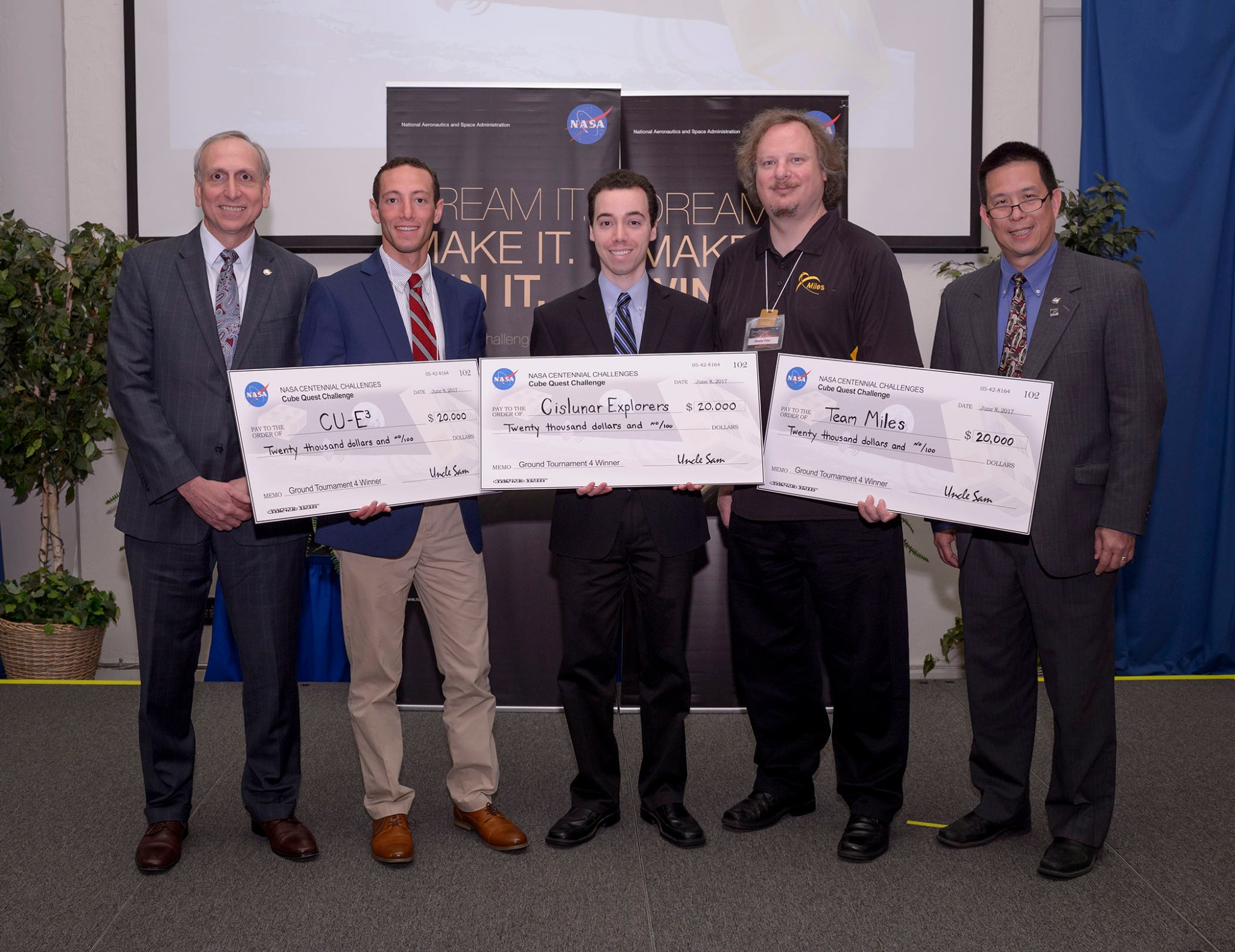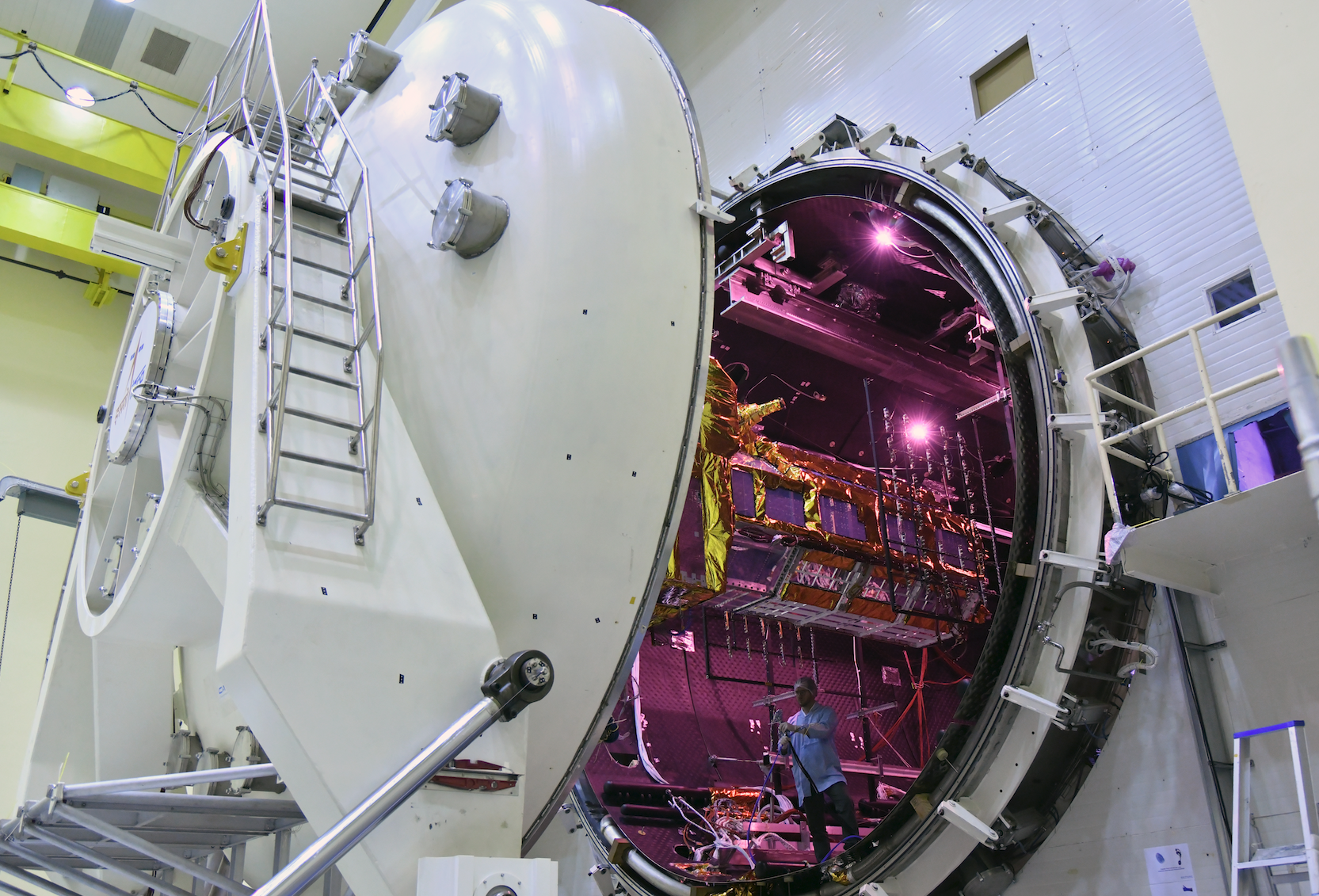Propelling NASA Closer to the Moon and Mars with Open Innovation
NASA is leading humanity’s return to the Moon through Artemis. Artemis will land the first woman and first person of color on the Moon and explore more of the lunar surface than ever before, using innovating technologies for scientific discovery and establishing a long-term presence. The technologies developed and knowledge gained through Artemis will contribute […]

6 min read
Propelling NASA Closer to the Moon and Mars with Open Innovation

NASA is leading humanity’s return to the Moon through Artemis. Artemis will land the first woman and first person of color on the Moon and explore more of the lunar surface than ever before, using innovating technologies for scientific discovery and establishing a long-term presence. The technologies developed and knowledge gained through Artemis will contribute to our next ambitious target: sending humans to Mars. These efforts are fueled by partnerships between NASA, other government agencies, and industry innovators for scientific discovery, economic benefits, and inspiring a new generation of explorers.
In addition to these partnerships, NASA also invites the national and global community to participate in Moon to Mars planning through open innovation initiatives. These initiatives tap into the creativity and passion of individuals of all ages and walks of life, helping us explore out-of-the-box solutions to address the agency’s mission-critical needs.
Innovating for Power and Energy
On the Moon, most exploration activities, life-support systems, and daily operations will require a great deal of energy. The Lunar Tele-Operated Rover-based Configurable Heliostat (Lunar TORCH) Challenge sought designs for a mobile lunar heliostat to redirect solar energy where it is most needed to support Artemis operations. Many of the submitted concepts demonstrated creative and efficient deployable technologies that could supply power to the Moon’s darkest regions.

The $5 million, multiphase Watts on the Moon Challenge sought solutions for power systems that can store energy and deliver continuous, reliable power while also withstanding the Moon’s extreme environment. Early phases of the challenge asked solvers to design system concepts, and Phase 2 Level 1 winners each received $200,000 along with an invite to participate in Level 2 to develop and test key parts of their solutions. The final level of Phase 2 culminated in a demonstration of the developed technologies. Four teams won $400,000 each and moved on to the final level of Phase 2.
Sustaining Life on the Moon
Water is a vital resource for space exploration and habitation, but it is also scarce; fortunately, lunar ice could serve as a source of water for humans away from home. With a $3.5 million prize pool, the Break the Ice Lunar Challenge seeks innovative approaches to excavating lunar ice and delivering it from a permanently shadowed region near the Moon’s South Pole. Redwire Space, headquartered in Jacksonville, Florida, placed first in Phase 1 of the challenge for its proposed two-rover system designed for simplicity and robustness. Phase 2 of the challenge focuses on developing and prototyping technologies that can excavate and transport large loads of icy lunar dirt and can continuously operate for up to 15 days.
How astronauts use the bathroom on the Moon is both a common curiosity and a real challenge for NASA to solve. The popular Lunar Loo Challenge and its concurrent Junior challenge for students and younger audiences asked the global community to conceptualize compact toilets that could operate in both microgravity and lunar gravity. The challenge received 2,953 entries from 107 countries, with ideas spanning from a bladeless fan that minimized crew interaction with waste bags to a foldable dry toilet.
Almost every submission had innovative ideas, giving NASA a sourcebook for future concept development work.

Kevin Kempton
NASA Langley Research Center
Managing Payloads, Deliveries, and Storage
A critical component of Artemis success is delivering payloads of varying mass and volume to the lunar surface and, eventually, Mars. With $25,000 in total prizes, the Lunar Delivery Challenge sought ideas for unloading payloads from commercial lunar landers. The winners conceptualized delivery systems that accounted for conditions on the Moon, the limitations of space delivery, and the different sizes of lunar landers.
Through the Advanced Lightweight Lunar Gantry for Operations (ALLGO) Challenge, NASA sought computer-aided design models of a mobile lunar gantry—or support structure—for unloading cargo at a safe distance away from the Artemis Base Camp. Competitors tackled designing the gantry with inflatable components, which could be compactable and easily deployed to the lunar surface. “Almost every submission had innovative ideas, giving NASA a sourcebook for future concept development work,” said Kevin Kempton, the ALLGO study and challenge lead at NASA’s Langley Research Center in Hampton, Virginia.

For operations on the Moon, small instruments that identify minerals and measure environments could play a key role in supporting a sustained lunar presence, providing valuable information at a lower cost. The Honey, I Shrunk the NASA Payload Challenge was open to the public in 2020 and resulted in 14 teams awarded a total of $160,000 for proposing small science instruments, similar in size to a bar of soap, that could fit on a miniature rover. In the challenge’s second phase, with a prize pool of $800,000, the previously winning teams each delivered one flight unit and two qualification units to NASA for testing. “This challenge was a great opportunity to work with the public to develop miniature payloads for our science and exploration missions,” said Josh Ravich, an engineer at NASA’s Jet Propulsion Laboratory in Southern California, who provided expertise for the challenge teams.
Regarding sample storage, NASA has a mission-critical need for cryogenic containment solutions. The ideal model would be lightweight and require low or no power to enable long-term storage and transportation of lunar material samples back to Earth. The $40,000 Lunar Deep Freeze Challenge sought cryogenic containment concepts in two categories: Small Transportable Cryogenic Containment Systems and Innovations for Long-Term Cryogenic Stowage and Transportation. The proposed solutions could support scientific discovery and contribute to our sustained lunar presence.
Preparing for a Leap Beyond
While many of these challenges have implications for Mars, the MarsXR Challenge specifically targets research on the red planet. This $70,000 challenge asked solvers to develop a new Virtual Reality (XR) environment to help prepare for experiences and situations astronauts could encounter on Mars. After a successful first run, the MarsXR challenge launched a new iteration in 2023.
The Cube Quest competition calls for teams to design, build, and deliver flight-qualified small satellites capable of advanced operations near and beyond the Moon. The competition offers $5 million in prizes across three stages, with opportunities that could help open deep space exploration to non-government spacecraft for the first time. This challenge seeks to establish precedence for subsystems that could perform deep-space exploration using small spacecraft.

Share
Details
Related Terms
What's Your Reaction?







































